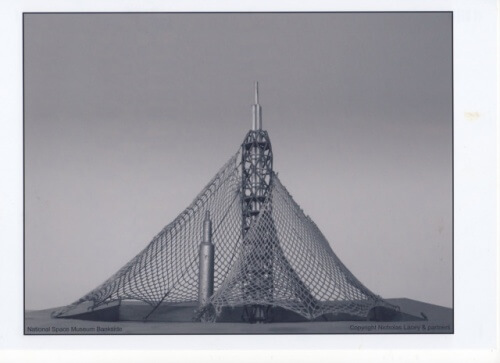Had things gone according to plan, instead of an old power station full of art, there would be an outpost of Mars on the south-bank of the Thames.
The brainchild of Lord Michael Young (dad of Toby Young) — the man behind the original concept of the Open University — the colony was in fact a research centre which would study the expected effects of living on Mars. A giant tower was proposed, which is about as far from what a likely Martian colony would look like, surrounded by a metal netting and would include educational facilities to encourage the peaceful use of space.
 All this was planned back in the 1980s, at the height of the Cold War and was a reaction to President Reagan’s planned space based missile defense system.
All this was planned back in the 1980s, at the height of the Cold War and was a reaction to President Reagan’s planned space based missile defense system.
Michael Young was alarmed by the proposal to militarise space, and wanted to push for a more peaceful use for space technologies, hence the Martian colony.
What became known as the Argo Venture was no mere whim though, and came tantalizingly close to being built — right here in the heart of London.
It was backed by the likes of television scientist, Heinz Wolff, NASA’s Viking probe scientist, James Lovelock, and Apollo astronaut, Russell Schweickart.
Although it had support from NASA scientists, the main aim was to build a European space industry, in cooperation with The Commonwealth nations, and Japan.
A deal was agreed to buy Bankside power station.
The plan called for some “30 or so volunteers who would, alongside the physical simulation, live under the conditions which it is imagined might obtain on a colony in Mars.”
Part of the funding for the experiment would come from being the original Big Brother TV show, as the experiment would be broadcast live, with the rights expected to be sold internationally. This was not entirely outlandish, as a similar project which put people into an iron-age like situation had been a television hit.
Initially, the plan was to rent an island off the coast of the UK for the Martian colony, but it was later moved to a more prominent location – the centre of London.
The impetus being to expand the experiment into a whole site devoted to promoting the space sciences, and that was rather easier to do in a city than on an isolated island. Also, at the time, Bankside was a run-down former power station in a run-down area. In other words, it was cheap land.
He also secured an agreement for a property developer to get the rest of the site in exchange for providing the bio-dome in which the Martian colonists would live.
However, along came the government, who privatised the Central Electricity Generating Board as the National Grid, and suddenly, plans by a state-owned company to just give away a large plot of land in London were scrapped. In addition, a rival scheme, the Biosphere 2 in the USA looked likely to be far more likely to get funding — which it eventually did — so the scientific value of a UK based outpost of Mars lost support.
Much later, an art gallery snapped up the site and it is now filled with objects that are often as outlandish as any martian could dream up.
As it happens, the UK is today one of the leading providers of peaceful space technologies. And a British Space Museum now also exists, in Leicester.
The architect of the Bankside Martian project, Nicholas Lacey went on to build Container City in Docklands.
Sources:
The Montreal Gazette, Sept 1984
Islands Magazine Jan-Feb 1985
New Scientist, 13th Sept 1984






